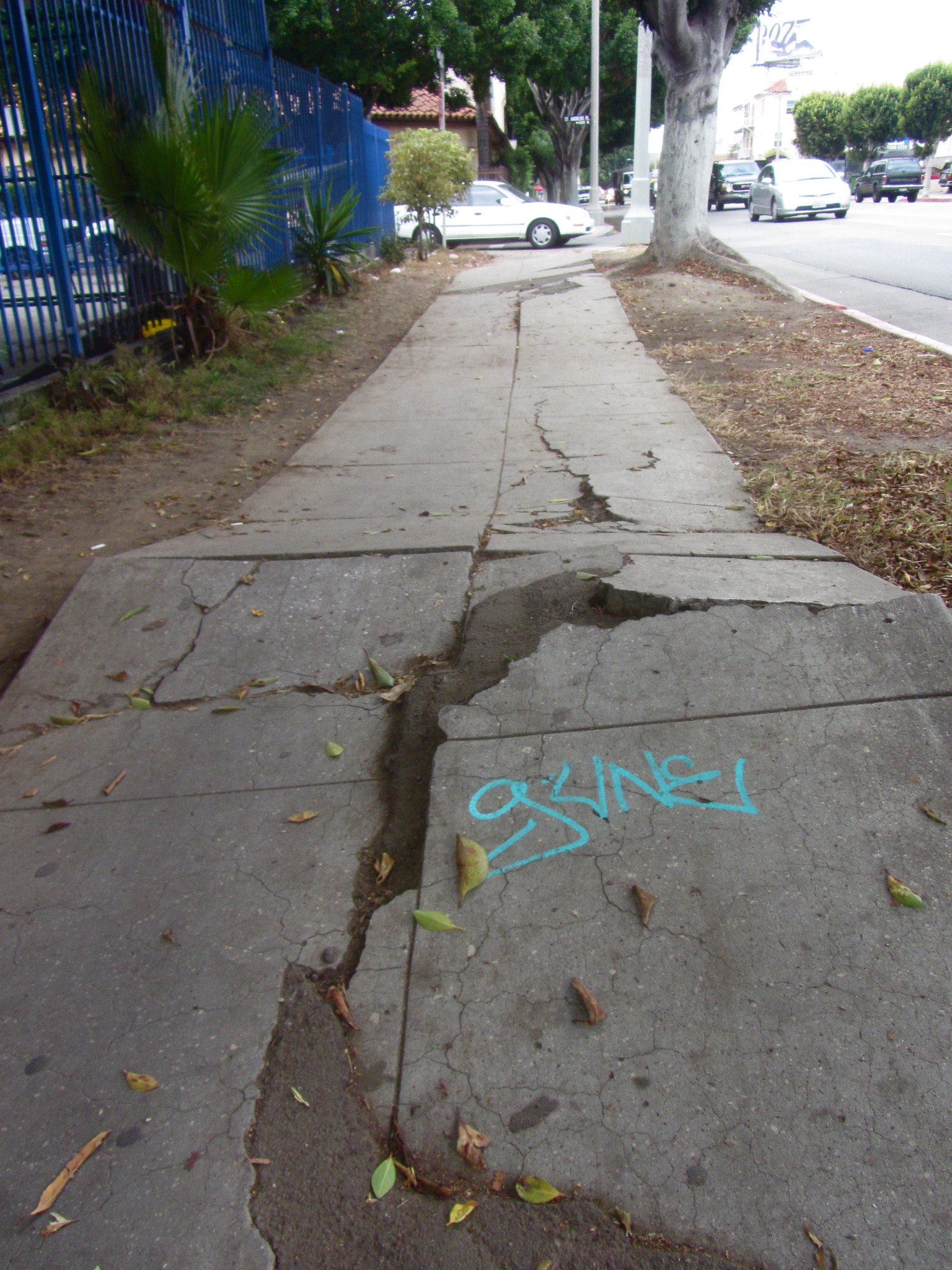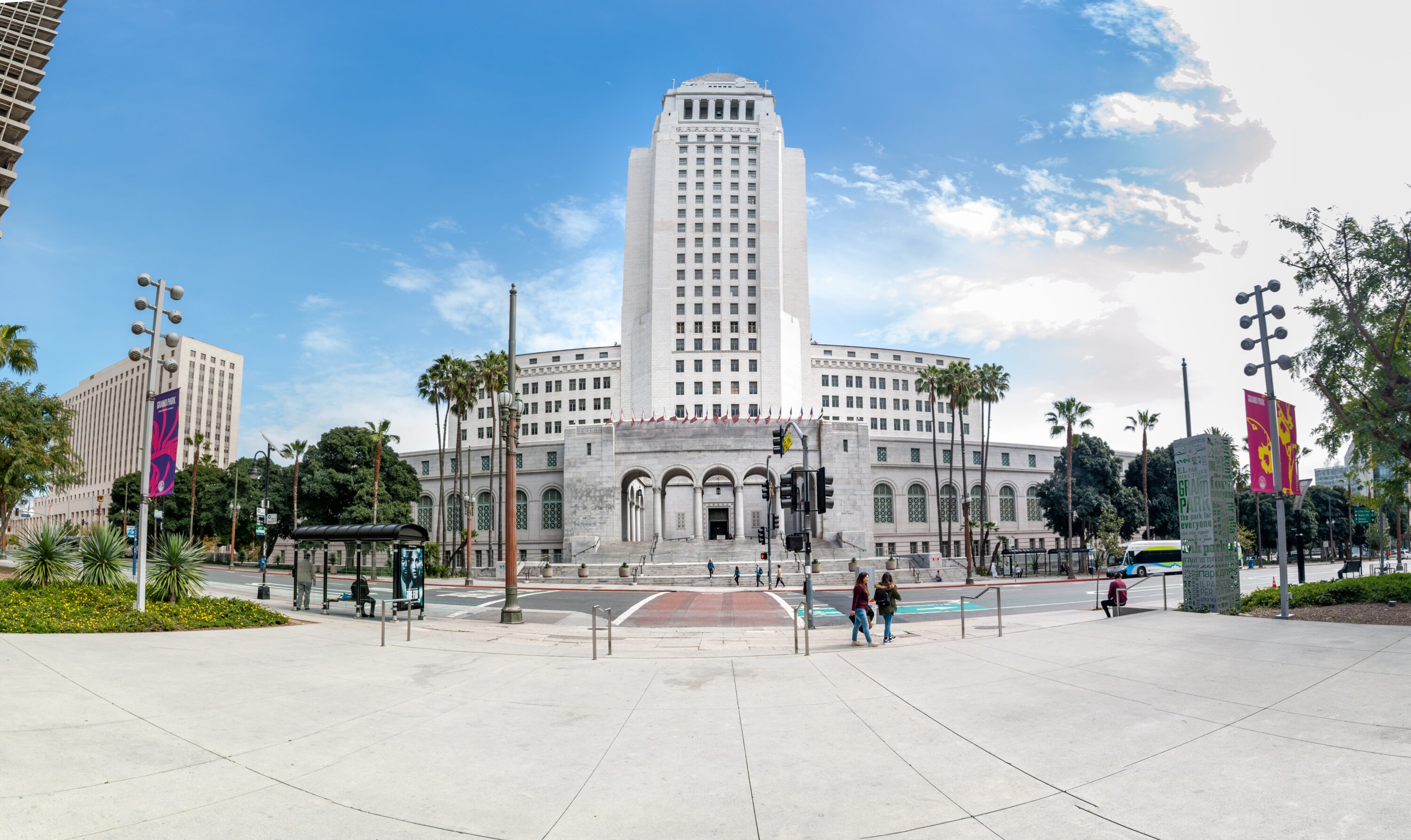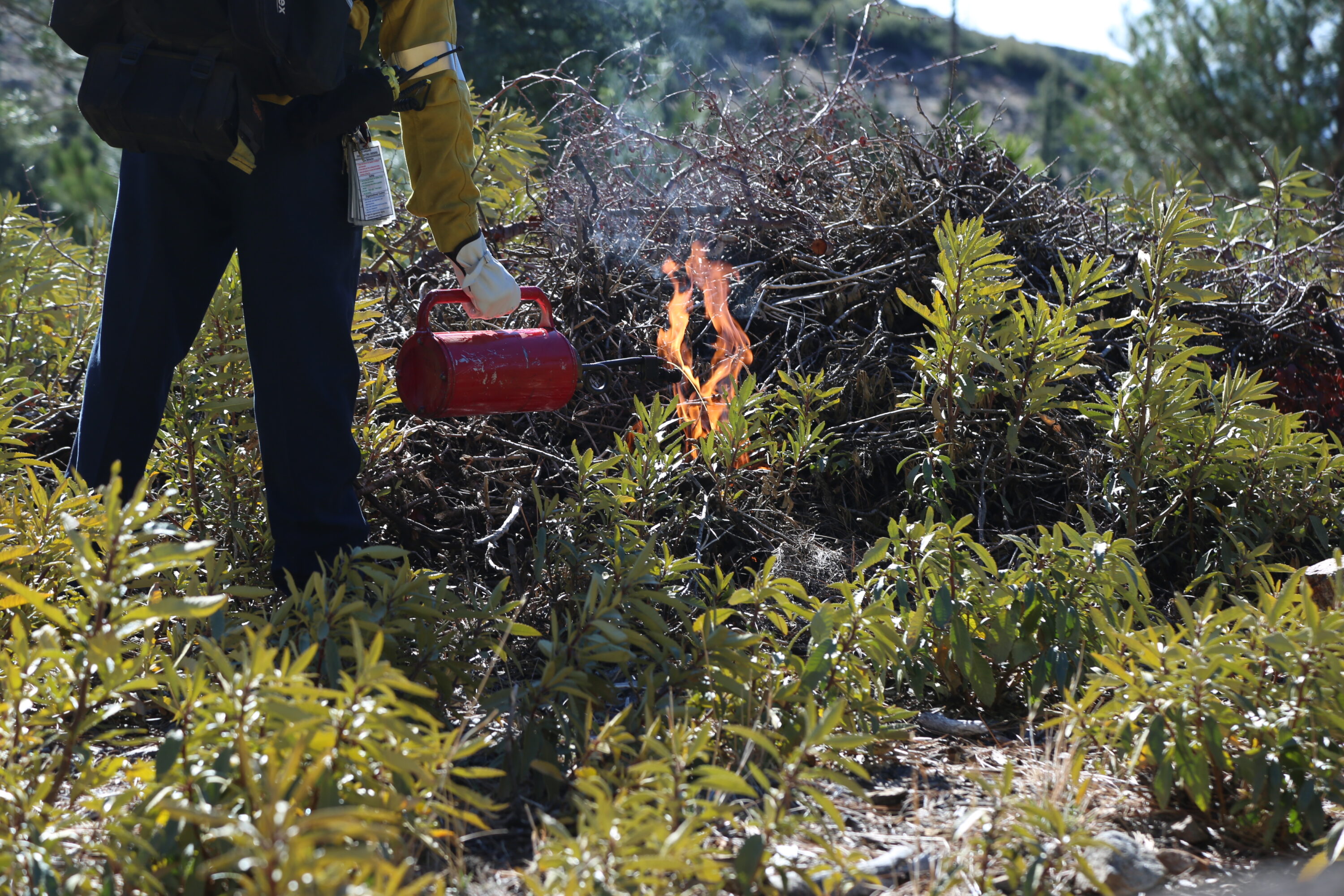By Margaret Shuttleworth
Councilmen Mike Bonin and Bob Blumenfield Wednesday introduced a motion aimed at improving Los Angeles’ system for repairing sidewalks based on a report by Controller Ron Galperin that found the city’s program was broken like many of the sidewalks themselves.
In his Nov. 17 report, Galperin called for a comprehensive assessment of the city’s 9,000 miles of sidewalks and a program that prioritizes fixing the damaged sections instead of replacing large swaths of sidewalks.
“Tens of thousands of sidewalks throughout Los Angeles are impassable for the elderly, individuals with disabilities and pedestrians of all ages,” Galperin said. “Despite its recent focus on the issue, the city’s sidewalk repair program is simply not working as it should. The sheer scale of the problem, combined with the city’s inefficient and ineffective strategy to address it, means dangerous sidewalks aren’t getting fixed fast enough. In fact, most won’t be fixed for years or even many decades.”
In the last five years, the city has received more than 1,700 claims and 1,020 lawsuits for sidewalk injuries, according to Galperin. It has paid more than $35 million in settlements, including $12 million in the 2020-21 fiscal year alone.
However, the number of sidewalk locations in need of repair is not known, as the city previously deemed a comprehensive assessment too expensive. Galperin said new technology can complete an assessment quickly and cost-efficiently.
Consideration of a potential sidewalk assessment came amid policy discussions in 2016, when Los Angeles settled a disability rights lawsuit. As part of the Willits settlement, the city agreed to spend $1.37 billion over three decades to address its broken sidewalks, inaccessible curb ramps and other barriers in the pedestrian right-of-way.
The City Council also adopted a “fix and release” policy in 2016, in which the city repairs sidewalks and then turns the responsibility over to the owners of adjacent properties along with a limited warranty. Under that policy, the city remains liable for sidewalk injuries under state law, but it can enforce the property owner’s responsibility to maintain the sidewalks.
The city releases responsibility to the owner through a certificate process, and Galperin said that as of the end of June 2021, the Bureau of Engineering had only 4,800 certificates, less than 1% of the 640,000 sidewalk parcels in Los Angeles.
“If you maintain that same pace, it’s going to take us 500 years to certify the sidewalks in the city,” he said on Nov. 17.
He also raised concerns that the city only completed sidewalk repairs at 2,100 sites, calling that “a small fraction of locations that need fixing.”
Another 50,000 reported problems have yet to be addressed, Galperin said.
He added that the current strategy results in more work than is required by law, as the city works to repair entire sidewalks on each parcel instead of focusing on the smaller defects.
“The city is doing too much work on many of its repairs, and that is taking too long … when sometimes just a few feet of repairs are needed, let’s say to fix cracks or raise sidewalks, what happens instead is a whole parcel is getting torn up. It’s wasteful, and from a cost perspective, it takes way too long.”
The motion introduced Wednesday instructs the Bureau of Engineering to report back within 60 days with recommendations for improvements or changes to the city’s sidewalk programs, including through recommendations from the controller.
Galperin had recommended the city:
- amend the municipal code to include new sidewalk inspection criteria that identifies significant defects in need of repair, instead of assessing entire parcels for compliance with accessibility standards;
- change the prioritization guidance to include sidewalks other than those near city facilities for repair;
- exercise discretion so that more sidewalk repairs can move forward and minimize the need for extensive pre-construction processes;
- expand the Bureau of Street Services’ capacity to provide quicker short-term responses to sidewalk problems reported by the public;
- implement long-term solutions jointly with the settlement’s sidewalk repair program;
- invest in a citywide condition assessment of all sidewalks and curb ramps to identify locations that need urgent fixes and help the city meet its ADA obligations; and
- pursue funding to address the mounting backlog of sidewalk requests.
Galperin’s audit is available at https://bit.ly/320nr5U.







